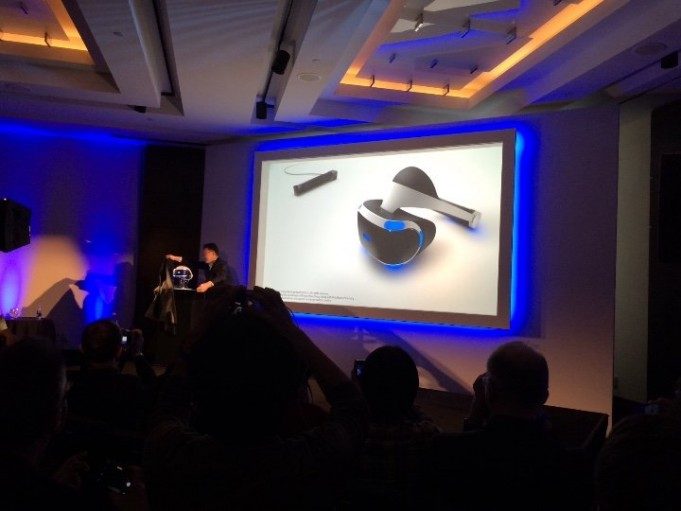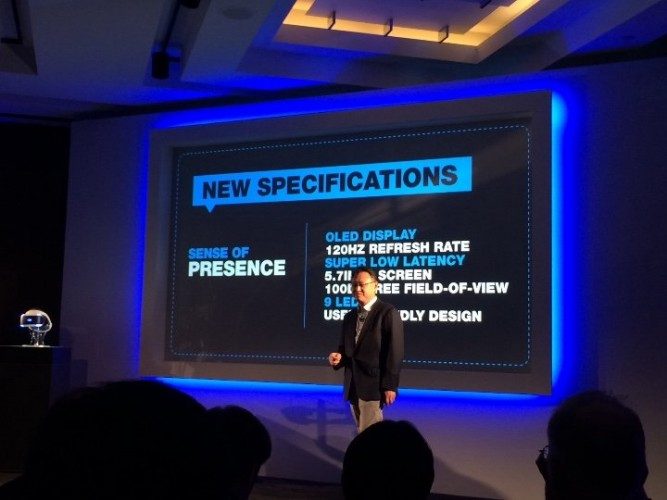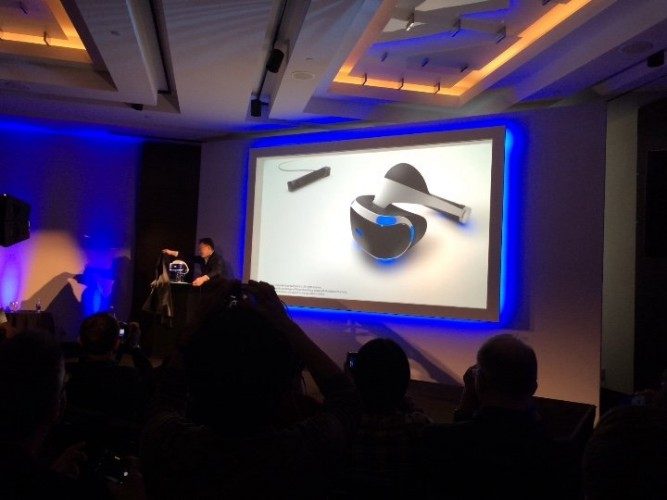One year on from Project Morpheus’ reveal at GDC 2104, Shuhei Yoshida just unveiled the newest prototype – now sporting some significant upgrades.
With a 1080p OLED panel capable of low persistence it, those aspects match Oculus’ DK2 which shipped last year. The kicker? The Panel runs at 120Hz, compared with the DK2’s 75Hz.
Yoshida also revealed that the system will finally ship to retail in the first half of 2016, Quarter 2 to be precise.
Elsewhere, Yoshida proudly announced the tech teams at Sony had managed to reduce latency on the headset (presumably overall motion to photons) to 18ms “..less than half of the first prototype.”
This story is breaking – we’ll bring you more soon.









